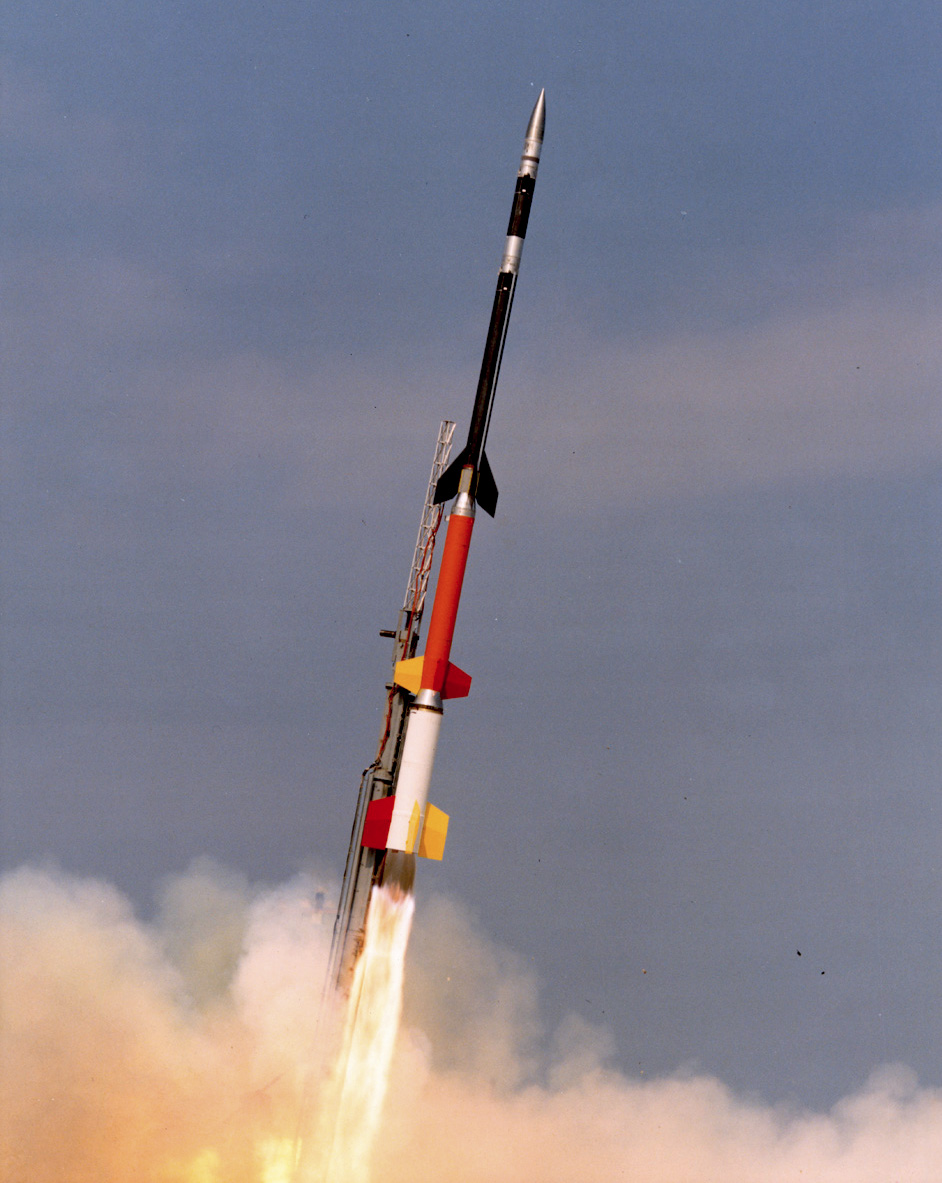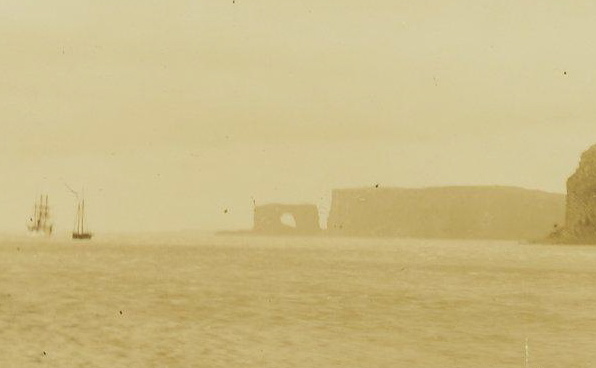|
Ăridan (rocket)
The Ăridan is a two-stage French sounding rocket, which results from the use of the ''Stromboli'' engine (also used on the Dragon and Dauphin) for the first and second stages. It belonged to a family of solid-propellant rockets that also encompasses the Belier, the Centaure, the Dragon, and the Dauphin. As the most powerful version of this series it could lift payloads from to up to altitudes of to a maximum of . Its ascent time is between 230 and 350 seconds. Total thrust was 90.00 kN (20,232 lbf) with a gross mass of to depending in payload. The rocket had a height of , a diameter of and a span of . An improved version called Ăridan II was planned in 1971 but it never materialized due to the project being cancelled in 1973. Launches Ăridan was flown fifteen times between 1968 and 1979 from Kourou and the Kerguelen Islands. The first flight from Kourou on 26 September 1968 failed, but was followed by twelve successful launches that took the rocket to altit ... [...More Info...] [...Related Items...] OR: [Wikipedia] [Google] [Baidu] |
Sounding Rocket
A sounding rocket or rocketsonde, sometimes called a research rocket or a suborbital rocket, is an instrument-carrying rocket designed to take measurements and perform scientific experiments during its sub-orbital flight. The rockets are often used to launch instruments from above the surface of the Earth, the altitude generally between weather balloons and satellites; the maximum altitude for balloons is about and the minimum for satellites is approximately . Due to their suborbital flight profile, sounding rockets are often much simpler than their counterparts built for orbital flight. Certain sounding rockets have an apogee between , such as the Black Brant X and XII, which is the maximum apogee of their class. For certain purposes, sounding rockets may be flown to altitudes as high as to allow observing times of around 40 minutes to provide geophysical observations of the magnetosphere, ionosphere, thermosphere, and mesosphere. Etymology The origin of the term comes fr ... [...More Info...] [...Related Items...] OR: [Wikipedia] [Google] [Baidu] |
Dragon (rocket)
The Dragon is a two-stage French solid propellant sounding rocket used for high altitude research between 1962 and 1973. It belonged thereby to a family of solid-propellant rockets derived from the BĂŠlier, including the Centaure, the Dauphin and the Ăridan. The dragon's first stage was a Stromboli engine (diameter 56 cm) which burned 675 kg of propellant in 16 seconds and so produced a maximum thrust of 88 kN. Versions of the BĂŠlier engine were used as upper stages. A payload of 30 to 120 kg could be carried on parabolic with apogees between 440 km (270 mi) (Dragon-2B) and 560 km (340 mi)(Dragon-3) Versions The Dragon was built in several versions including the Dragon-2B, and Dragon-3: Launches Dragons have been launched from Andøya, Biscarrosse, Dumont d'Urville, CELPA (El Chamical), CIEES, Kerguelen Islands The Kerguelen Islands ( or ; in French commonly ' but officially ', ), also known as the Desolation Is ... [...More Info...] [...Related Items...] OR: [Wikipedia] [Google] [Baidu] |
Dauphin (rocket)
The Dauphin is a French sounding rocket, flown six times between 1967 and 1979. It consists of a modification of the first stage of the Dragon with a larger payload nosecone. The Dauphin has a diameter of 56 centimetres, a launch weight of 1.132 metric tons, a length of 6.21 metres, a takeoff thrust of 90 newton (unit), kN and a ceiling of 150 kilometres. It belonged to the ''Stromboli'' family of Solid-propellant rocket, solid-propellant including the Belier (rocket), Belier, the Centaure (rocket), Centaure, and the Dragon, along with the Ăridan (rocket), Eridan. Launches The first launch occurred on March 20, 1967 from Hammaguir, Hammaguira and was a failure. The three next flights, from CERES Ile du Levant, Ile du Levant and Biscarrosse, Biscarosse were successful. On September 14, 1971, a Dauphin rocket was first launched from Guiana Space Centre, Kourou, conducting the ''PHARE (FU-196) Aeronomy mission''. A final launch happened on February 8, 1979 to test the Ariane l ... [...More Info...] [...Related Items...] OR: [Wikipedia] [Google] [Baidu] |
Solid Rocket
A solid-propellant rocket or solid rocket is a rocket with a rocket engine that uses solid propellants (fuel/ oxidizer). The earliest rockets were solid-fuel rockets powered by gunpowder. The inception of gunpowder rockets in warfare can be credited to the ancient Chinese, and in the 13th century, the Mongols played a pivotal role in facilitating their westward adoption. All rockets used some form of solid or powdered propellant until the 20th century, when liquid-propellant rockets offered more efficient and controllable alternatives. Because of their simplicity and reliability, solid rockets are still used today in military armaments worldwide, model rockets, solid rocket boosters and on larger applications. Since solid-fuel rockets can remain in storage for an extended period without much propellant degradation, and since they almost always launch reliably, they have been frequently used in military applications such as missiles. The lower performance of solid propellants ... [...More Info...] [...Related Items...] OR: [Wikipedia] [Google] [Baidu] |
Centaure (rocket)
Centaure was a two-stage French sounding rocket consisting of a Venus first stage and a Belier second stage. It belongs to a family of solid-propellant rockets consisting of the Belier, Centaure, Dragon, Dauphin, and Eridan. It was operated by Sud-Aviation between 1961 and 1986. Centaure rockets were launched from the CIEES/ Hammaguir missile range, Reggane, CELPA, Salto di Quirra, Esrange, Thumba, Sonmiani, and Andøya. It had a maximum payload of 60 kg, an apogee of 130-146 km, a launch thrust of 44 kN, a launch weight of 500-600 kg, a diameter of 0.28 m and a length of 5.9-6.3 m. Versions There were various versions of Centaure rockets: Launches A large number of Centaure rockets was launched between 1961 and 1986: See also * Belier * Dauphin * Dragon A dragon is a Magic (supernatural), magical legendary creature that appears in the folklore of multiple cultures worldwide. Beliefs about dragons vary considerably through regions, but European dr ... [...More Info...] [...Related Items...] OR: [Wikipedia] [Google] [Baidu] |
Guiana Space Centre
The Guiana Space Centre (; CSG), also called Europe's Spaceport, is a spaceport to the northwest of Kourou in French Guiana, an Overseas departments and regions of France, overseas region of France in South America. Kourou is located approximately north of the equator at a latitude of 5°. In operation since 1968, it is a suitable location for a spaceport because of its near equatorial location and open sea to the east and north. At CSG, space launches are conducted by several European private companies and government agencies working together. The CSG land itself is managed by CNES, the French national space agency. The launch infrastructure built on the CSG land is owned by the European Space Agency. The private company Arianespace operates the launches including planning missions, handling customer relationships and overseeing the team at CSG that integrates and prepares vehicles for launch. The rockets themselves are designed and produced by other companies, ArianeGroup f ... [...More Info...] [...Related Items...] OR: [Wikipedia] [Google] [Baidu] |
Kerguelen Islands
The Kerguelen Islands ( or ; in French commonly ' but officially ', ), also known as the Desolation Islands (' in French), are a group of islands in the subantarctic, sub-Antarctic region. They are among the Extremes on Earth#Remoteness, most isolated places on Earth, with the closest territory being the Heard Island and McDonald Islands territory of Australia located at roughly , and the nearest inhabited territory being Madagascar at more than in distance. The islands, along with AdĂŠlie Land, the Crozet Islands, Ăle Amsterdam, Amsterdam and Ăle Saint-Paul, Saint Paul islands, and France's Scattered Islands in the Indian Ocean, are part of the French Southern and Antarctic Lands and are administered as a separate district. The islands constitute one of the two exposed parts of the Kerguelen Plateau (the other being Heard Island and the McDonald islands), a large igneous province mostly submerged in the southern Indian Ocean. The main island, Grande Terre, is in area, about ... [...More Info...] [...Related Items...] OR: [Wikipedia] [Google] [Baidu] |
Ultraviolet Astronomy
Ultraviolet astronomy is the observation of electromagnetic radiation at ultraviolet wavelengths between approximately 10 and 320 nanometres; shorter wavelengths—higher energy photons—are studied by X-ray astronomy and gamma-ray astronomy. Ultraviolet light is not visible to the human eye. Most of the light at these wavelengths is absorbed by the Earth's atmosphere, so observations at these wavelengths must be performed from the upper atmosphere or from space. Overview Ultraviolet line spectrum measurements (spectroscopy) are used to discern the chemical composition, densities, and temperatures of the interstellar medium, and the temperature and composition of hot young stars. UV observations can also provide essential information about the evolution of galaxies. They can be used to discern the presence of a hot white dwarf or main sequence companion in orbit around a cooler star. The ultraviolet universe looks quite different from the familiar stars and galaxies ... [...More Info...] [...Related Items...] OR: [Wikipedia] [Google] [Baidu] |
Solar Physics
Solar physics is the branch of astrophysics that specializes in the study of the Sun. It intersects with many disciplines of pure physics and astrophysics. Because the Sun is uniquely situated for close-range observing (other stars cannot be resolved with anything like the spatial or temporal resolution that the Sun can), there is a split between the related discipline of observational astrophysics (of distant stars) and observational solar physics. The study of solar physics is also important as it provides a "physical laboratory" for the study of plasma physics. History Ancient times Babylonians were keeping a record of solar eclipses, with the oldest record originating from the ancient city of Ugarit, in modern-day Syria. This record dates to about 1300 BC. Ancient Chinese astronomers were also observing solar phenomena (such as solar eclipses and visible sunspots) with the purpose of keeping track of calendars, which were based on lunar and solar cycles. Unfortunately, rec ... [...More Info...] [...Related Items...] OR: [Wikipedia] [Google] [Baidu] |
BĂŠlier (rocket)
BĂŠlier is the designation of a France, French sounding rocket family. Three versions of the BĂŠlier were launched between 1961 and 1970 at the CIEES launch facility at Hammaguir, the Salto di Quirra and CERES Ile du Levant, Ile du Levant missile ranges, and Kourou Space Center. After its retirement, the BĂŠlier was used as a stage for a family of solid-propellant rockets, including the Centaure (rocket), Centaure, the Dragon (rocket), Dragon, the Dauphin (rocket), Dauphin and the Ăridan (rocket), Ăridan. Versions Belier I The first Belier single stage rocket, powered by a Jericho (missile), Jericho motor. * payload: 30 kg * apogee: 80 km * takeoff thrust: 20.00 kN * takeoff weight: 313 kg * diameter: 0.31 m * length: 4.01 m * fin span: 0.78 m Belier II Upgraded Belier single stage rocket, using 'Plastolite' propellant. * payload: 30 kg * apogee: 130 km * takeoff thrust: 21.50 kN * takeoff weight: 352 kg * diameter: 0.31 m * length: 5.90 m * fin span: 0.78 m Be ... [...More Info...] [...Related Items...] OR: [Wikipedia] [Google] [Baidu] |




